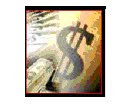 The American people have spoken and have clearly shown how unhappy they are with the Administration and the Democrats, formerly in control of both houses - result - the House is now in Republican hands. It is the nature of our political landscape to seek new blood when results are unsatisfactory. No surprise, considering unemployment is still high, with the actual rate somewhere in the teens, not the published 9.5% - 10% range. Many are not being counted because they are no longer eligible for unemployment benefits or they never had any to begin with. The housing sector is still weak and the commercial construction industry is a disaster. The Democrats are lucky to have held onto the Senate.
The American people have spoken and have clearly shown how unhappy they are with the Administration and the Democrats, formerly in control of both houses - result - the House is now in Republican hands. It is the nature of our political landscape to seek new blood when results are unsatisfactory. No surprise, considering unemployment is still high, with the actual rate somewhere in the teens, not the published 9.5% - 10% range. Many are not being counted because they are no longer eligible for unemployment benefits or they never had any to begin with. The housing sector is still weak and the commercial construction industry is a disaster. The Democrats are lucky to have held onto the Senate.More Reasons for Political Unrest:
Mr. Obama claims that he cut small business taxes 16 times to fend off public perception that he is not a friend to small business. However, half of the “tax cuts” are actually incentives that reward businesses for taking actions they might not otherwise take - in other words, you have to spend money to get the tax benefit. For example, only businesses that already provide health insurance to their employees now would consider the health-care credit a tax cut. The main beneficiaries are businesses making big investments (and perhaps those caught investing in tax-shelter scams). Encouraging such investments may be a worthwhile public policy goal, but in this economic climate, the number of companies that will participate is likely to be very limited. Those inclined to be suspicious of Mr.Obama probably won’t take much comfort in this offering.
Today the Fed announced another round of asset purchases to the tune of $600 billion, adding to the $2 trillion already spent from 2008 to present. This second round of quantitative easing comes with many risks. The idea behind asset purchases is to flood the economy with money (the Fed printing press), which would lower interest rates and spur more lending and spending. But new asset bubbles could form if the Fed doesn't start backing away from its policy of easy money, often thought to be the source of the housing bubble which caused the recession in the first place.
Kansas City Fed President Thomas Hoenig has been warning of asset bubbles since early this year, and consistently voted against additional asset purchases and low interest rates. There are already troubling signs of possible new bubbles, like increases in the values of various assets from Treasuries to gold to other commodities.

The dollar is at risk: at the last Fed meeting policymakers said prices were too low, and signaled they were ready to take action if necessary. That caused a drop in the value of the dollar, as investors fear the currency will lose value in the future. That day, the dollar fell about 1% against the euro, and almost 4% more since then. If more confidence is lost, a downward spiral for the greenback could raise prices by making the cost of various commodities and imports, such as food and oil, more expensive for Americans. That could also drive up interest rates, as overseas investors financing U.S. government debt would demand higher rates to compensate for expected declines in the dollar. Higher rates could lead to a host of problems, like making business and consumer loans more expensive. It would also hurt the value of the Fed's huge asset holdings.
Click to continue
C. Cohn
Cohn-Reilly Report

















No comments:
Post a Comment